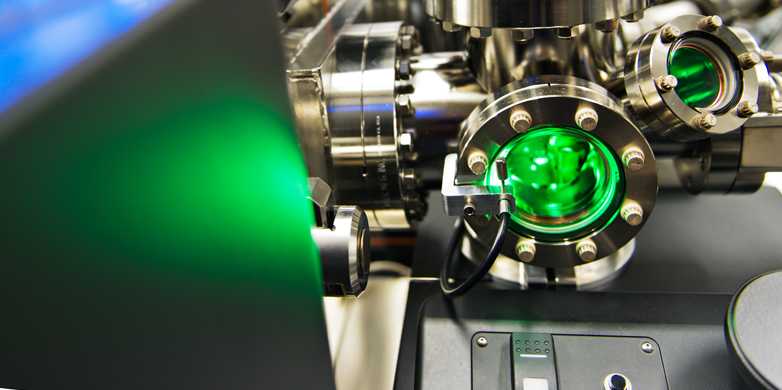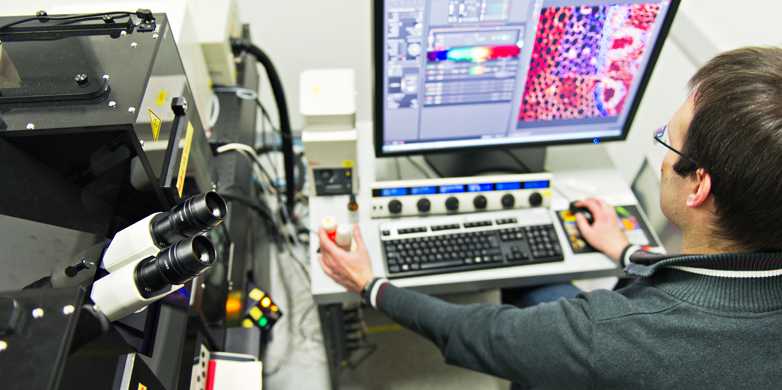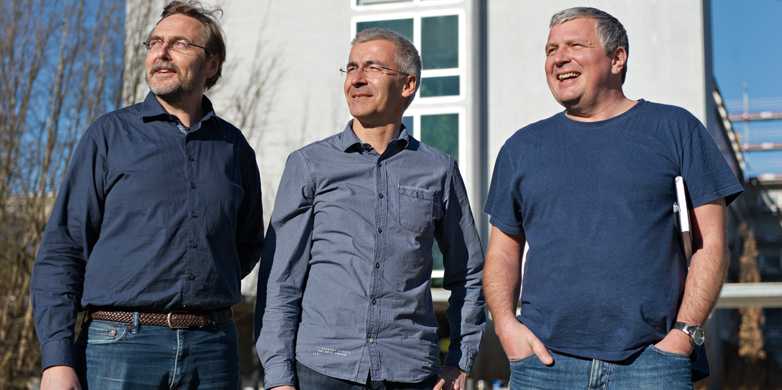ScopeM: Magnifying the minuscule
Need an optical or electron microscope for your research? Look no further than ScopeM. The Hönggerberg campus has been home to this technology platform since 2014.
It's a long way down. Metal-plated passages wind their way further and further underneath the lawn between the HPM and HPF buildings at ETH's Hönggerberg site before reaching a set of heavy steel doors. Behind these doors are some of ETH's most valuable electron microscopes. The custom-built, reinforced concrete structure nine metres below ground is the only environment in which they are able to perform at their best, free from vibrations and electromagnetic interference fields.
The microscopes belong to the Scientific Center for Optical and Electron Microscopy, or ScopeM: an interdisciplinary technology platform ETH launched in early 2014 and combining the Electron Microscopy Center (EMEZ) and Light Microscopy and Screening Center. Managing Director Nicolas Blanc describes ScopeM's role: "We see ourselves as a service centre for scientific microscopy. Basically, what we do is create pictures of tiny objects and analyse them at the highest possible resolution."
Blanc joined the 30-strong ScopeM team in September 2014. A physicist who has spent 25 years in applied research, developing microelectronic components and optical sensors, his remit is to manage and develop the technology platform. Structure researcher Roger Wepf and biophysicist Gábor Csúcs – former heads of the EMEZ and LMSC respectively – act as technical directors, providing Blanc with expert support and assisting him in the strategic development of the platform.
The microscopy platform for ETH
"Our services are primarily aimed at members of ETH Zurich and research staff, but in principle we're open to anyone," explains Blanc. Equipment must be hired by the hour and reservations can be made online; for researchers, rates are cheaper than for industry users. There are already 500 users from 180 research groups benefiting from the technology platform, which is among the largest at ETH; 95 percent of the users are from ETH or the ETH Domain.
"The first thing we do is train users on the microscopes before letting them loose," says Blanc. Depending on the
microscope's complexity, training can last up to several days – and users have to know not only how to operate the instrument itself, but also how to prepare samples and carry out evaluations. These processes differ on almost every microscope, so if a user only needs a certain instrument once, it may make sense for them to have the ScopeM team carry out some or all of the project.
ScopeM's overall aim is to act as a platform combining all of ETH Zurich's microscopy services. "With our central resource providing everything 24/7, there's no need for each research group to buy its own equipment, then only use it occasionally," explains Blanc. At up to four million Swiss francs per instrument, the central platform comes with a hefty price tag – but its aggregated approach has scientific justifications too: combining optical and electron microscopy can enhance the results of many research projects, for example.
The two technologies offer different strengths. Currently, only electron microscopy is able to depict structures measuring as little as 0.1 nanometres at the atomic scale, but optical microscopes can provide a dynamic and colour view of biological, geological and chemical structures, and make their features more distinct. It can also be used to examine living samples – something that electron microscopy has not yet achieved.
In search of the ideal microscope
As Csúcs explains, the ultimate microscope would therefore combine the resolution of electron microscopy with the flexibility of optical microscopy.
For some months, the HPM building has in fact been keeping something close to this perfect instrument hidden behind green partitions and a curtain protecting it from scattered light. It is a STED microscope, and is helping optical microscopy make a giant leap closer to the resolution capabilities of its electron counterpart. Its inventor, Stefan Hell, only received the Nobel Prize in Chemistry in 2014 for his work, but as Csúcs points out with some pride: "We'd acquired the instrument before that!"
ScopeM houses over 100 or so instruments in total, 30 of which its managing director refers to as the centre's core. They include instruments that cannot be found anywhere else in Switzerland – like the atom probe tomograph, which makes it possible to reconstruct samples in 3D with atomic resolution.
Platform set to expand
Seven new instruments for members of ETH, plus three high-end research instruments, have already been added since the start of the year. And to ensure the facility is providing a true centre for microscopy, in 2016 the majority of the instruments will move to a central location covering two to three storeys of the HPM building. This is something that Roger Wepf is already eager to see, as the electron microscopes and preparation instruments have at times been distributed across six buildings and are still housed in three different ones today.
In the future, only the sensitive large-scale instruments will remain in their purpose-built underground chamber.
ScopeM
ScopeM is a central technology platform set up by ETH Zurich. Its main site is the Hönggerberg campus. An interdisciplinary microscopy centre, it provides researchers from various departments with a shared facility for using costly infrastructure. With its state-of-the-art electron and optical microscopy, and nanoanalytics technology, ScopeM assists in the process of structural material characterisation. Microscopes can be reserved online by submitting a description of the project in question.
This article was originally published in the ETH community magazine life.



